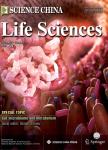Phenylalanine diminishes M1 macrophage inflammation
作者机构:Guangdong Laboratory of Lingnan Modern AgricultureNational Engineering Research Center for Breeding Swine IndustryCollege of Animal ScienceSouth China Agricultural UniversityGuangzhou 510642China College of Animal Science and TechnologySouthwest UniversityChongqing 400715China
出 版 物:《Science China(Life Sciences)》 (中国科学(生命科学英文版))
年 卷 期:2023年第66卷第12期
页 面:2862-2876页
核心收录:
学科分类:0710[理学-生物学] 0830[工学-环境科学与工程(可授工学、理学、农学学位)] 1001[医学-基础医学(可授医学、理学学位)] 100102[医学-免疫学] 10[医学]
基 金:supported by the National Natural Science Foundation of China (32225047,31922079) the Laboratory of Lingnan Modern Agriculture Project (NT2021005)
主 题:IL-1β macrophage phenylalanine succinyl-CoA valine
摘 要:Emerging evidence suggests that amino acids dictate the effector functions of immune cells;however, whether and how phenylalanine(Phe) orchestrates the polarization of macrophages is not understood. Here, we determined that Phe attenuated lipopolysaccharide(LPS) and P. multocida serotype A strain CQ2(PmCQ2) infection-induced inflammation in vivo. Furthermore, we demonstrated that Phe inhibited the production of interleukin(IL)-1β and tumor necrosis factor(TNF)-α in proinflammatory(M1) macrophages. Phe reprogrammed the transcriptomic and metabolic profiles and enhanced oxidative phosphorylation in M1 macrophages, which reduced the activation of caspase-1. Notably, the valine-succinyl-CoA axis played a critical role in Phe-mediated inhibition of IL-1β production in M1 macrophages. Taken together, our findings suggest that manipulating the valine-succinyl-CoA axis provides a potential target for preventing and/or treating macrophage-related diseases.



